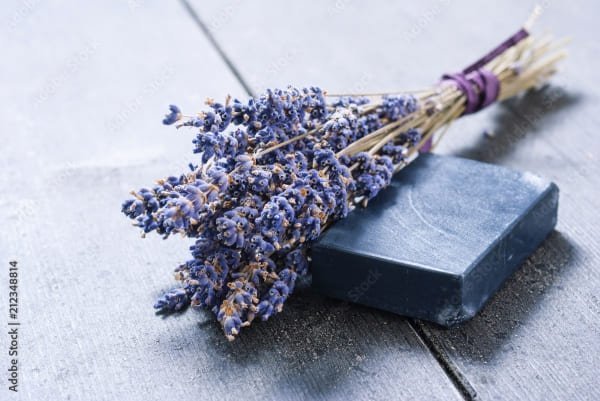Dried lavender, with its enchanting aroma and beautiful purple hue, has long been cherished for its calming properties. However, beyond its uses in aromatherapy and home décor, dried lavender serves as an effective and eco-friendly insect repellent. This article will delve into the details of how dried lavender can be used to repel insects naturally, offering an in-depth exploration of its benefits, mechanisms, and practical applications.
1. Understanding the Repellent Properties of Lavender
Lavender’s insect-repellent qualities stem from its essential oils, particularly linalool and linalyl acetate, which are naturally unpleasant to many common pests. These compounds work by masking the scents that attract insects, disrupting their ability to locate food, mates, or suitable environments for laying eggs. This makes lavender an effective deterrent against a wide variety of pests, including:
- Mosquitoes: Perhaps the most notorious pests, mosquitoes are effectively repelled by the scent of lavender.
- Moths: Lavender has been traditionally used to repel moths, especially in wardrobes and linen closets.
- Fleas: Pet owners often use lavender sachets in pet bedding to keep fleas at bay.
- Flies: The strong scent of lavender discourages flies from lingering in the house.
- Ants: While not universally effective for all ant species, lavender can deter certain types by disrupting their scent trails.
2. Why Choose Dried Lavender Over Synthetic Repellents?
With the increasing awareness of the environmental and health impacts of synthetic insect repellents, many people are turning to natural alternatives. Dried lavender offers several advantages:
- Non-Toxic: Unlike chemical repellents that can contain harmful ingredients like DEET, lavender is non-toxic and safe for use around children, pets, and even food.
- Eco-Friendly: Growing and using lavender has minimal environmental impact, especially when compared to the production and disposal of synthetic repellent products.
- Aesthetically Pleasing: Dried lavender adds a decorative touch to your home, unlike synthetic repellents, which are often visually unappealing.
- Cost-Effective: Once harvested and dried, lavender can be used repeatedly, making it a cost-effective option for long-term pest control.
3. How to Use Dried Lavender as an Insect Repellent
There are several ways to incorporate dried lavender into your pest control routine. Here are some of the most effective methods:
a. Lavender Sachets
Sachets filled with dried lavender flowers can be placed in various locations to repel insects. Here’s how you can use them:
- In Closets and Drawers: Place sachets in wardrobes, drawers, and storage areas to keep moths and other insects away from your clothes and linens.
- Under Pillows and Cushions: Keep sachets under pillows or on furniture cushions to repel fleas and bed bugs.
- In Pet Bedding: For pet owners, adding lavender sachets to pet bedding can help repel fleas naturally.
DIY Recipe: To make your own sachets, fill small fabric bags with dried lavender flowers. You can refresh the scent by adding a few drops of lavender essential oil to the flowers periodically.
b. Lavender Bundles
Lavender bundles are another effective way to use dried lavender as an insect repellent:
- Hang in Doorways and Windows: Hanging lavender bundles near entry points can help prevent insects like flies and mosquitoes from entering your home.
- Place in Bedrooms: Keep a lavender bundle by your bedside to enjoy its calming scent and repel pests like mosquitoes while you sleep.
c. Lavender Potpourri
Creating a potpourri with dried lavender and other natural elements can enhance its repellent properties:
- In Bowls Around the House: Place bowls of lavender potpourri in various rooms, especially in areas where insects are most problematic.
- In Cars: Keep a small potpourri sachet in your car to repel mosquitoes and other bugs during the summer months.
DIY Recipe: Mix dried lavender flowers with other insect-repelling herbs like rosemary, mint, and bay leaves. Add a few drops of lavender essential oil for an extra boost.
d. Lavender-Infused Oil Sprays
While dried lavender is effective on its own, you can enhance its repellent properties by creating a lavender-infused oil spray:
- In the Garden: Spray lavender-infused oil around your garden to protect plants from insects without harming beneficial pollinators like bees.
- On Skin: A diluted lavender oil spray can be used as a natural insect repellent for your skin. Just ensure that you use a safe carrier oil like jojoba or almond oil to dilute the essential oil before application.
DIY Recipe: To make a lavender-infused oil spray, steep dried lavender flowers in a carrier oil for several weeks, strain, and then mix with water in a spray bottle. For every ounce of oil, add about 10-15 drops of lavender essential oil for extra potency.
4. Lavender as a Companion Plant
Dried lavender's uses extend beyond the home. When used as a companion plant, lavender can help protect your garden from pests:
- Repelling Garden Pests: Lavender plants are known to repel aphids, whiteflies, and cabbage moths, making them a great addition to vegetable and herb gardens.
- Attracting Pollinators: While lavender repels harmful pests, it also attracts beneficial insects like bees and butterflies, which are essential for pollination.
- Deterring Deer and Rabbits: The strong scent of lavender is also known to deter larger pests like deer and rabbits, protecting your garden plants.
Once harvested, the dried lavender from your garden can continue to serve as an insect repellent indoors.
5. Additional Benefits of Using Dried Lavender
In addition to its insect-repellent properties, dried lavender offers several other benefits:
- Calming Effects: Lavender is well-known for its calming and soothing properties, making it a popular choice in aromatherapy. Using lavender sachets or potpourri in your home can create a relaxing atmosphere while keeping pests at bay.
- Air Freshening: Lavender’s pleasant fragrance can help neutralize odors and keep your home smelling fresh.
- Decorative Appeal: Dried lavender’s beautiful purple blooms and elegant shape add a decorative element to your home, enhancing the visual appeal of your space.
6. Conclusion
Dried lavender is a powerful, natural insect repellent that offers numerous benefits beyond just pest control. Whether you’re using it in sachets, bundles, potpourri, or sprays, lavender provides a safe, eco-friendly, and aesthetically pleasing alternative to synthetic repellents. Its versatility, combined with its calming effects and decorative appeal, makes dried lavender an excellent choice for anyone looking to maintain a pest-free home naturally.
By integrating dried lavender into your home and garden, you not only protect your space from unwanted insects but also create a soothing, fragrant environment that promotes well-being. Embracing natural insect repellents like dried lavender is a step toward a more sustainable and health-conscious lifestyle, making it a valuable addition to any home.




